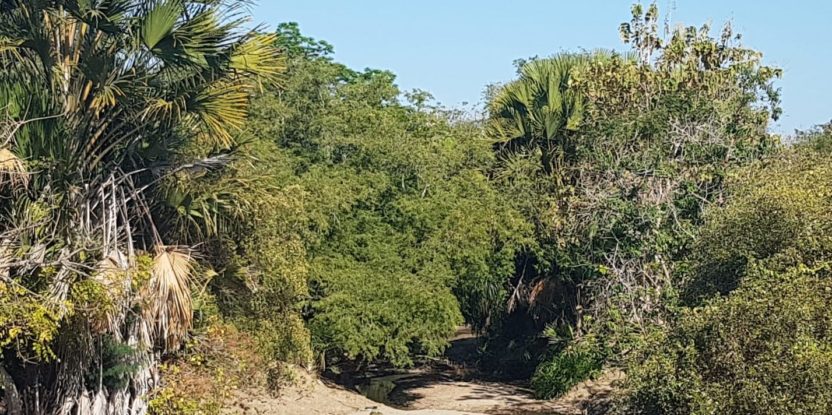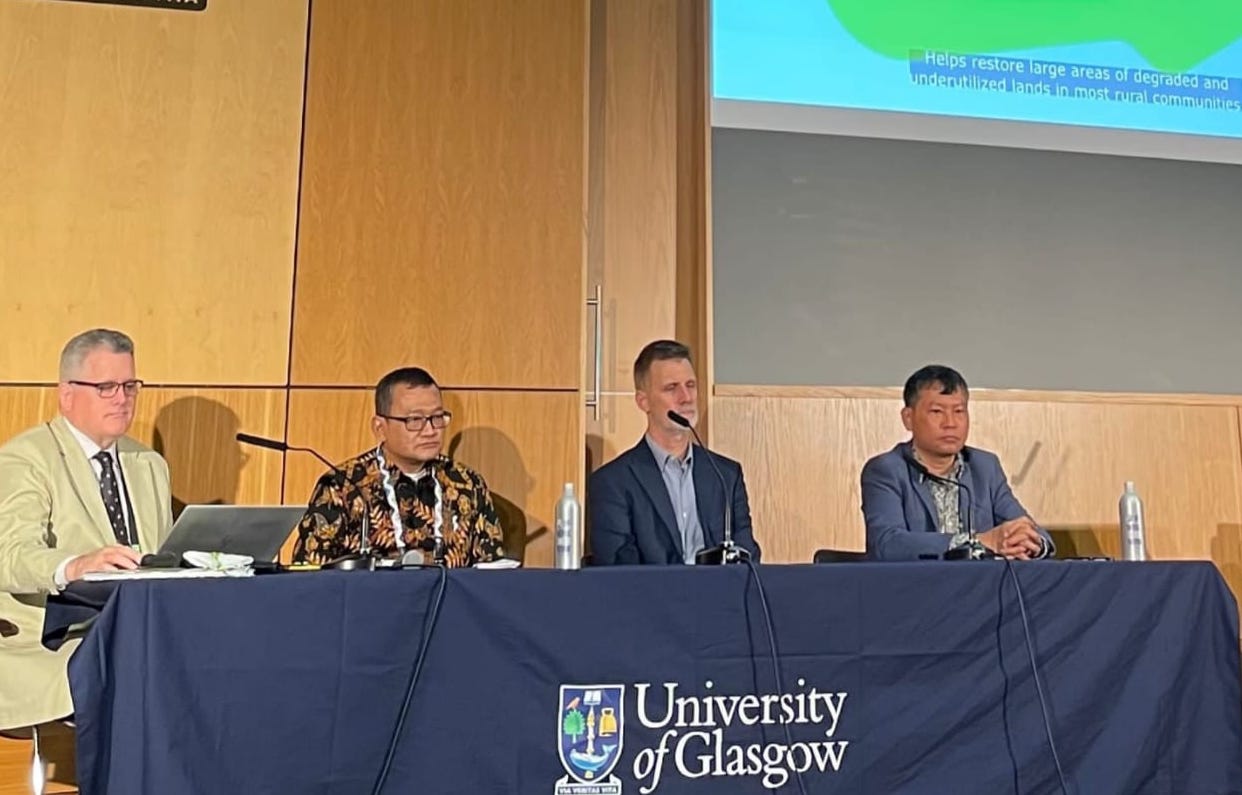Indonesia is an energy-rich country, but electricity poor, a situation that Jaya Wahono is determined to change. As director of Clean Power Indonesia (CPI), he has a vision of transforming degraded lands into energy-producing fields by planting fast-growing trees and bamboo.
Wahono grew up in the capital Jakarta on the island of Java with an abundance of electricity, but he is a social entrepreneur, with a strong belief that energy in Indonesia should be universal, climate-friendly, sourced, distributed, and provided domestically.
About 40 percent of the country’s population of 250 million people do not have access to reliable electricity in part due to distribution difficulties across the archipelago of 17,000 islands – 9,000 of which are inhabited.
Most developed countries consume about 9,000 kilowatt hours per person per year, but in Indonesia, on average, electricity consumption is only about 1,000 kilowatt hours per person per year.
Wahono’s vision, which also includes using crop residues, aligns with one at the Center for International Forestry Research and World Agroforestry (CIFOR-ICRAF).
Under the Biomass Development for Land Restoration, Renewable Energy, and Emissions Reductions in Indonesia (BIODEV) project, CIFOR-ICRAF and partners are working on the development of climate-smart agroforestry business models to supply sustainable biomass feedstock for energy, catalyzing transformation of land use and energy sectors throughout Indonesia.
In 2018, through CPI, Wahono introduced a land restoration and rural electrification initiative funded with a grant by the U.S. government in Mentawai, a string of islands west of Indonesia’s island of Sumatra.
In the least developed regions of Indonesia, such as the province of East Nusa Tenggara, which is comprised of more than 500 islands, including Sumba, Flores and the western part of the island of Timor – the focus of Wahono’s latest project – consumption is even lower, at less than 200 kilowatts per hour, per person a year.
“That’s about the level of sub-Saharan African countries,” he said in a presentation at the Global Landscapes Forum (GLF), which was held on the sidelines of the COP26 climate conference at the University of Glasgow. “This is one of the biggest challenges in Indonesia – if we don’t solve this, then we are not going to be able to catch up with other nations.”
Indonesia’s islands are heavily dependent on coal and diesel-generated electricity, and cannot be connected on a single electrical grid, unlike in Europe and other areas of the world.
This lower carbon approach to electricity generation will lead to a biomass production and conservation forests, simultaneously restoring degraded and marginal land, and supporting rural livelihoods through sustainable biomass value chains.
“In Indonesia, each island has to develop its own power generation – 9,000 islands means developing 9,000 power plants and 9,000 mini grids,” Wahono said.
Armed with a freshly signed agreement with the local government witnessed by the minister of village development and governor of East Nusa Tenggara, which agrees to facilitate a local feedstock supply — specifically the fast-growing, leguminous species, gamal – Wahono aims to replicate the Mentawai project.
Developing biomass power and solar electricity panels, also known as photovoltaics (PV), will enable replacement of the diesel gensets in Indonesian Timor.
The CPI project caught the interest of the national government, not only because of the energy potential but because the project is expected to create 45,000 jobs and help restore more than 100,000 hectares of degraded lands, Wahono said.
“Indonesia supports the development of community-based biomass power plants in least developed regions because not only is this in line with our NDC (Nationally Determined Contributions) target, but this project will contribute to poverty reduction and job creation,” said Ruandha Agung Sugardiman, director general of forestry planning and environmental governance in Indonesia’s Ministry of Environment and Forestry.
NDCs are part of the U.N. Paris Agreement strategy to prevent post-industrial average temperatures from rising to 1.5 degrees Celsius or higher. Signatory countries are required to provide data on greenhouse gas emissions and reductions targets they aim to meet post-2020.
“Biomass energy has been a contentious issue in the Global North with serious debates over net greenhouse gas emissions reduction and forest and biodiversity impacts,” said session moderator, Michael Brady, a principal scientist and leader of the Value Chains, Finance and Investment team at CIFOR-ICRAF.
He challenged the panelists to discuss how these issues may or may not apply to the global south, where socioeconomic and environmental conditions are different.
Wahono’s work on community-based power generation in Mentawai demonstrated that bamboo could also be used as biomass feedstock and to promote carbon sequestration in soils.
“We hope that with collaboration, we can materialize the power plant in Timor,” said Trinh Thang Long, program coordinator of global assessment of bamboo and rattan for green development at the International Bamboo and Rattan Organisation, explaining that while he recommends bamboo as a fast-growing plant, which can restore degraded land, he does not advise using bamboo to replace forest trees.
“I’d recommend use of bamboo for biomass energy — especially small scale for people in Timor who live in areas where they don’t have access to grid electricity,” he said.
One advantage of bamboo is that it can be used in intercropping agricultural systems and grows well in riparian areas, said Neville Kemp, an environmental expert and director of Ekologika, a consulting company, which provides natural resource management services.
The process of introducing any biomass species and restoration efforts will be conducted in an environmentally and socially acceptable way, incorporating core principles we apply when designing and implementing community-based power plants or biomass for power plants, said Neville, who also worked on the Mentawai project with Wahono.
These include avoiding deforestation and supporting biodiversity, in developing livelihoods we should avoid competition with existing livelihoods such as agriculture, and achieve an overall reduction in greenhouse gases, he said.
Comparative research focused on biomass energy use in Korea led by Mihyun Seol, a scientist working on Indonesian peatlands restoration studies ongoing between the Korea’s National Institute of Forest Science and the Center for International Forestry Research and World Agroforestry (CIFOR-ICRAF), was used during the session to provide a benchmark comparison.
The project can contribute to international development objectives such as climate targets and the Sustainable Development Goals, Seol said.
CIFOR-ICRAF, which has conducted research into biomass in some of Indonesia’s degraded peatlands using the oily nyamplung kernel, and pongamia, espouses the tenet of planting the right tree in the right place for the right purpose while respecting community rights, she added, suggesting that ecotourism opportunities exist in areas that have been naturally regenerated.
Wahono hopes construction will be underway by June 2022 and completed within a year.
We want you to share Forests News content, which is licensed under Creative Commons Attribution-NonCommercial-ShareAlike 4.0 International (CC BY-NC-SA 4.0). This means you are free to redistribute our material for non-commercial purposes. All we ask is that you give Forests News appropriate credit and link to the original Forests News content, indicate if changes were made, and distribute your contributions under the same Creative Commons license. You must notify Forests News if you repost, reprint or reuse our materials by contacting forestsnews@cifor-icraf.org.

